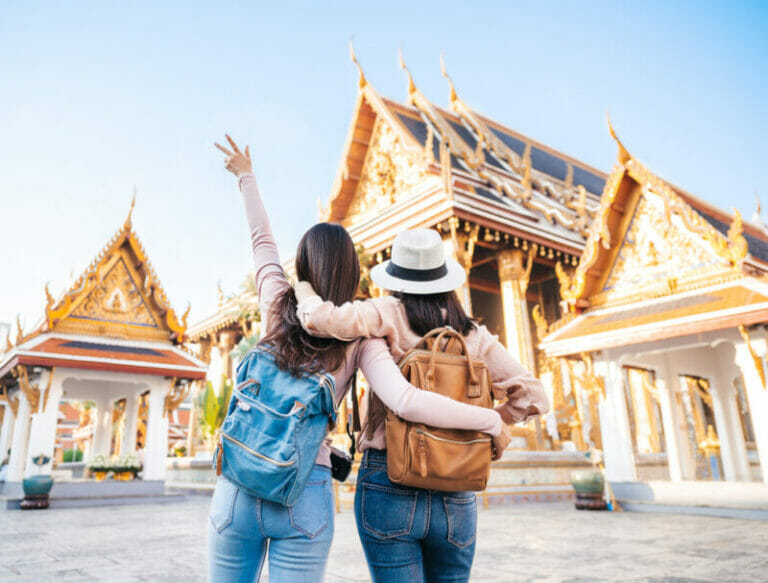Statues of Buddha: 7 Most Famous Gautama Buddha Statues
Buddha statues are representative of tranquility and serenity, and have been revered for many centuries. They retain significant cultural and spiritual importance to this day.
In this post, we will delve into some of the most renowned Buddha statues present in the world currently.
Buddhism is a belief system that originated in the Eastern world. It is based on the teachings of Siddhartha Gautama, who was born in 563 BC and lived until 483 BC.
The statue of Buddha is an image that has become iconic to Buddhism and Buddhist culture.
To represent enlightenment and peace, many people place statues outside their homes or temples as a way to welcome visitors with kindness.
They are used as a reminder to the observer that it is possible for humans to be enlightened and reach Nirvana.
Many people may think that statues of Buddha are a form of idolatry. However, these statues represent the teachings and wisdom of Buddha’s life.
A statue is not worshiped or prayed to, but it can be used as a reminder for Buddhist practitioners to aspire to the qualities represented by their idol.
Buddha Statue: Indoor Decor
Note that most of the statues in this article are famous Buddha statues from around the world.
If you are interested in small Buddha statues for decoration or other religious reasons, Amazon would be a good place to look. They have a great collection of decorative Buddha statues.
The reviews for many of these statues on Amazon are overwhelmingly positive.
7 Most Famous Statues of Lord Gautama Buddha
Buddha statues can be found in different shapes and sizes. The following is a list of some famous Buddha statues:
01. Temple of the Reclining Buddha

Thailand’s Wat Pho is known for its huge reclining Buddha statue. There are about 200 years worth of history in this installation.
During the construction of the statue, Bangkok had not yet been recognized as the capital. The statue is the largest of the reclining/resting Buddha found in Thailand.
The gold-studded Buddha statue is 46 meters long and 15 meters high. The eyes and legs of the statue are embellished with precious pearls.
02. The Great Statue of Kamakura

A 93 ton bronze statue measuring 13 meters (15 feet) high graces the Kotoku Buddhist temple, Kamakura, Japan.
This Amida Buddha statue is undoubtedly one of the most famous statues in Japan. Both the statue (or daibutsu) and the temple belong to the Jodo shu sect of Japan.
03. Hussain Sagar Buddha Statue

One of India’s most famous Buddha statues, the Hussain Sagar Buddha statue stands in the middle of an artificial lake in Hyderabad.
Among all the single statues in India, this statue is the second largest. It measures 17 meters (56 feet) in height and weighs 320 tons. This statue has a tragic story associated with it.
When it was being constructed in 1992, the statue fell into a nearby lake and eight workers died.
04. Tian Tan Buddha Statue
The statue of Buddha shown in the above image is located on Lantau Island in Hong Kong. Tian Tan Buddha is often referred to as the Big Buddha by locals.
The installation was completed in 1993. The statue was designed to inspire people to think about the relationship between nature and religion, according to Po Lin Monastery.
05. Ushiku Daibutsu
Ushiku Daibutsu, located in Ushiku, Japan, is one of the tallest statues in the world. Having a height of 120 meters (394 feet), it is certainly a tall structure.
The statue is made of bronze and it represents Amitabha Buddha, also known as Ushiku Arcadia.
There is a viewing platform there. This viewing platform, where visitors can better see the statue, is accessible via elevator.
06. Avukana Buddha
The standing Buddha statue at Avukana in Sri Lanka is considered to be among the best of its kind.
It is a straight-backed Buddha with the left hand clutching the robe at its left shoulder. The palm of the right hand faces left and is lifted up to the right shoulder.
It resembles the Asisa mudra, which is a variation of Abhaya mudra.
An ancient granite rock face was used for carving the statue. In its bare form, the Avukana statue is 38 feet 10 inches (11.8 m) high, and its pedestal adds an additional 13 feet (4.2 m).
07. Great Buddha
Bodh Gaya, Bihar (India) is home to the great Buddha statue, one of the most popular stops on Buddhist pilgrimage routes.
The large Buddha sculpture located in a garden at the end of Temple Street and dwarfs its surroundings.
The statue was designed by V. Ganpati Sthapati, and it measures 80 feet (24 meters), on which the Buddha occupies 64 feet (20 metres), the lotus on which the Buddha sits six feet (1.8 metres), and the base is ten feet (3 metres).
Buddha is shown seated in an open-air lotus position, or the dhyana mudra, in the statue. The structure is surrounded by smaller sculptures of the ten disciples on either side.
Blocks of red granite and sandstone are used to construct the structure. Inside the statue is a spiral staircase leading up to the chest. There are also 16,300 small bronze images of the Buddha displayed on the interior walls.
Parting Words
Every religion has its own set of traditions and practices. Buddhism is no exception to this, with it’s deep beliefs rooted in teachings from Siddhartha Gautama known as the Buddha or “Enlightened One.”
Buddhist followers often incorporate statues into their spiritual lives and homes, which are also a common sight in temples around the world.
Such sculptures serve not only as representations of a deity but can be seen as symbols for enlightenment itself.
Usually they are made in the likeness of Siddhartha Gautama and can be found all over the world, from Thailand to China to India.
The most well-known type of Buddha statue is probably the sitting or seated Buddha. But there are also standing Buddhas, reclining Buddhas and even sleeping Buddhas.
Stone, metal, clay, or wood are the most common materials used to make these statues.
The purpose of such statues was often to offer veneration by presenting a depiction of an important religious figure and making people aware of their teachings.
In Buddhism, statues are used to represent different aspects of the Buddha as well. For example, a statue might be seen as a representation of the Buddha’s wisdom or his kindness.
Meditating on these images/statues is believed to help followers gain control over their thoughts, feelings, actions, and sense faculties (five aggregates).







